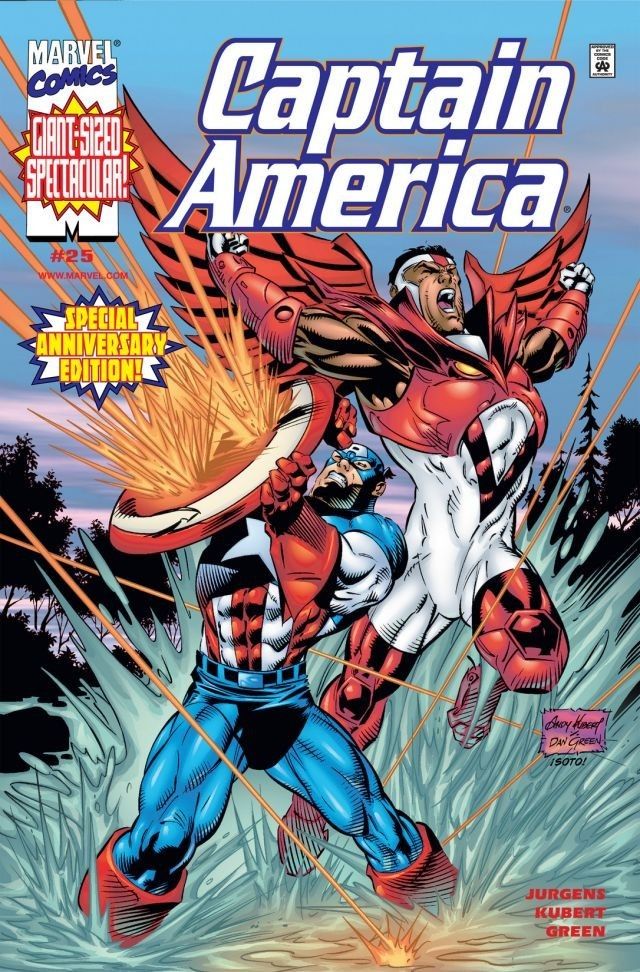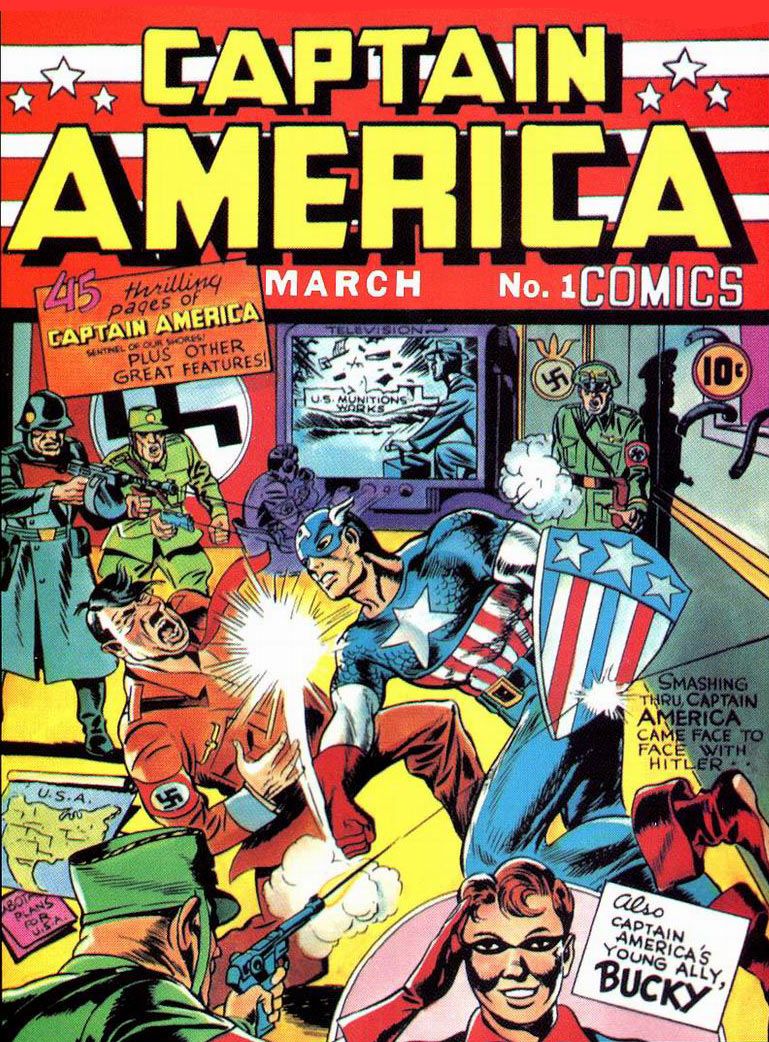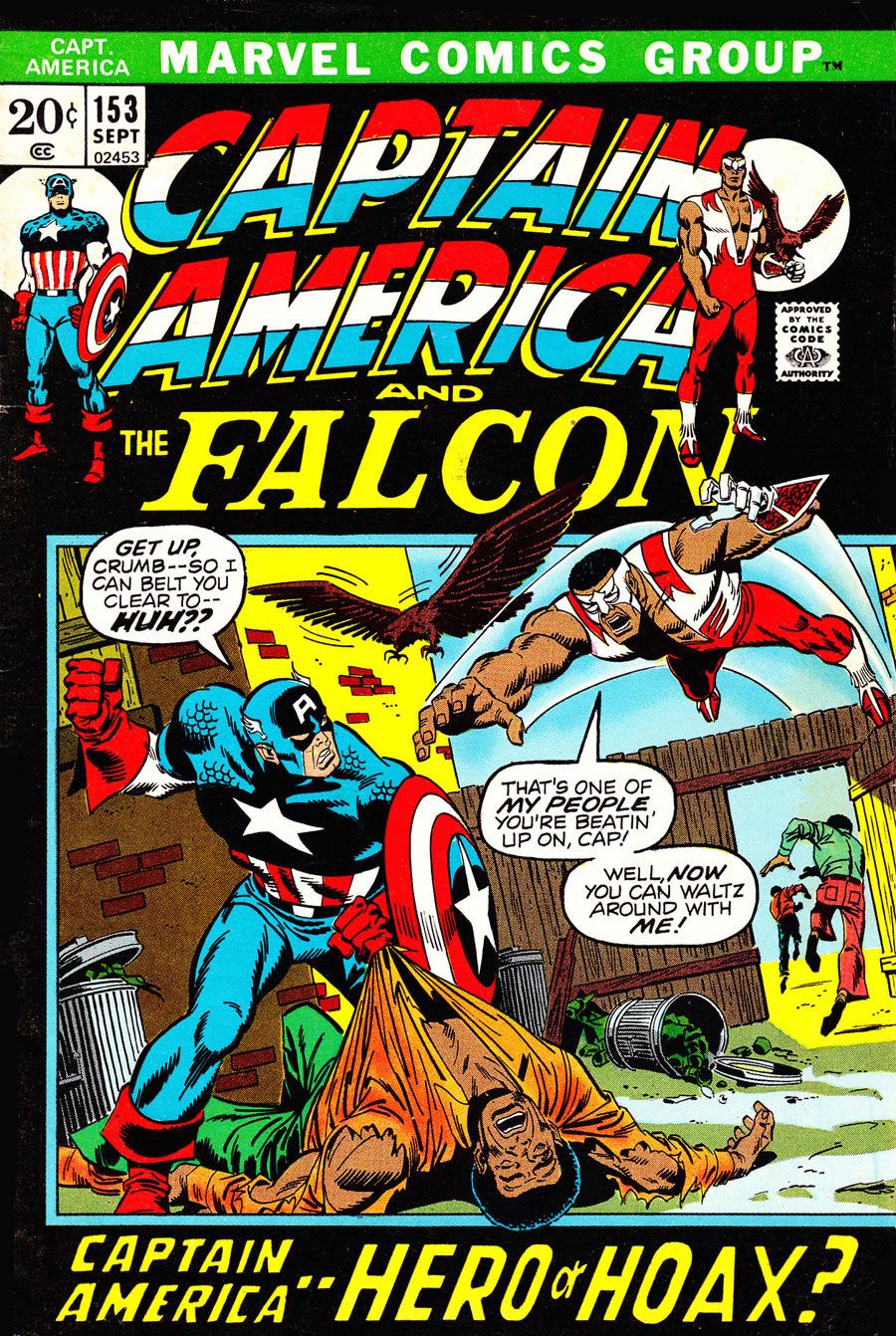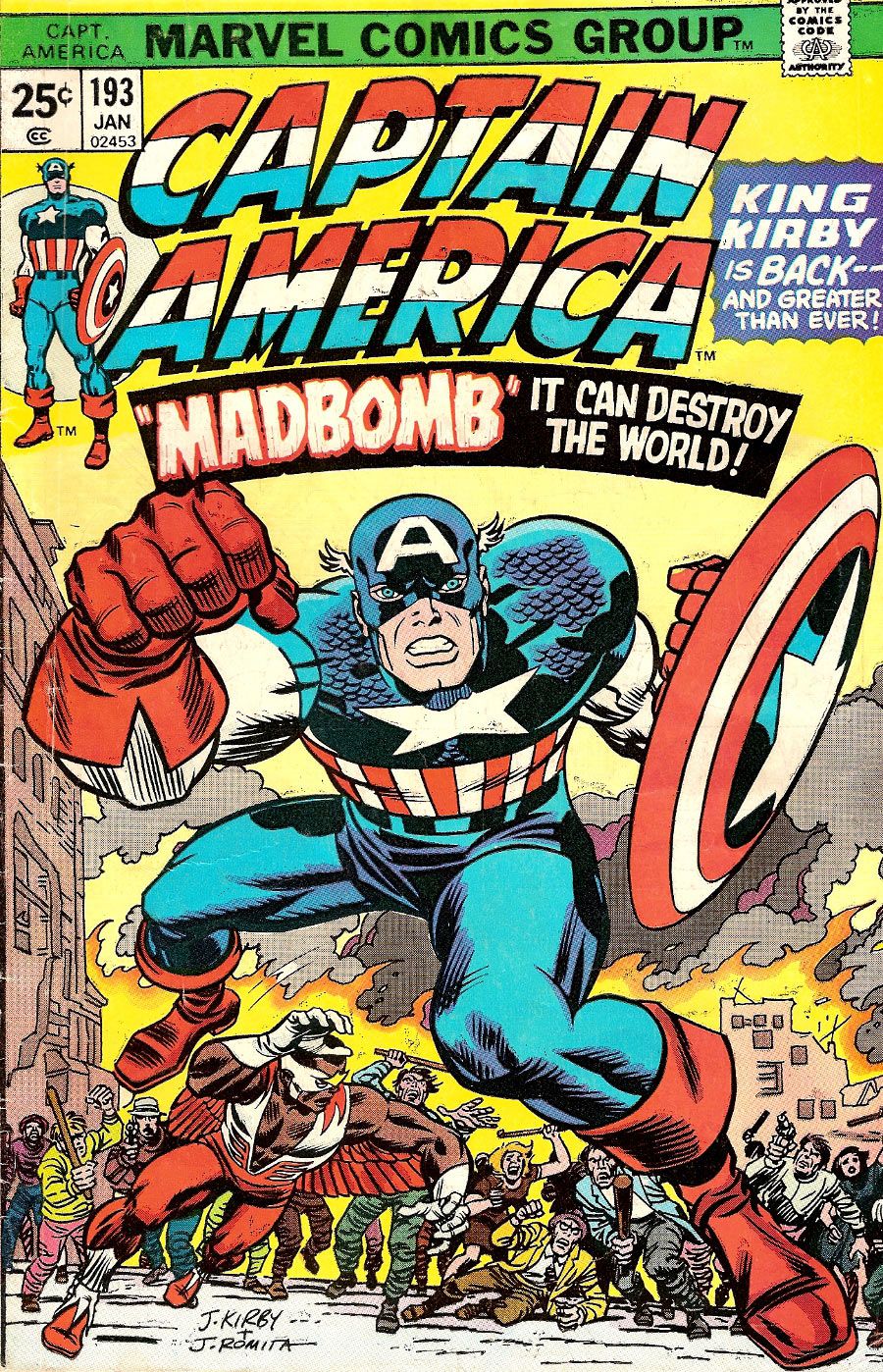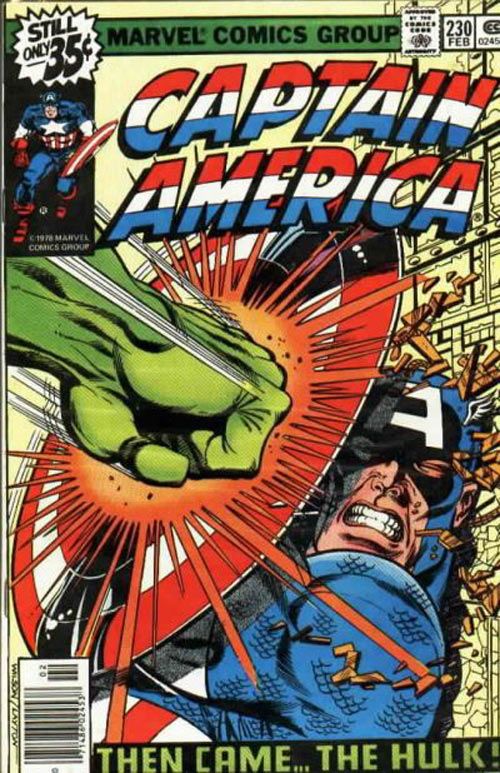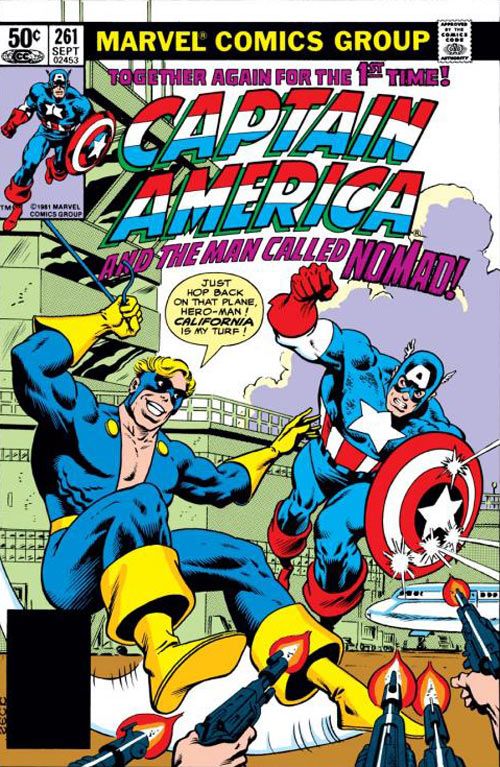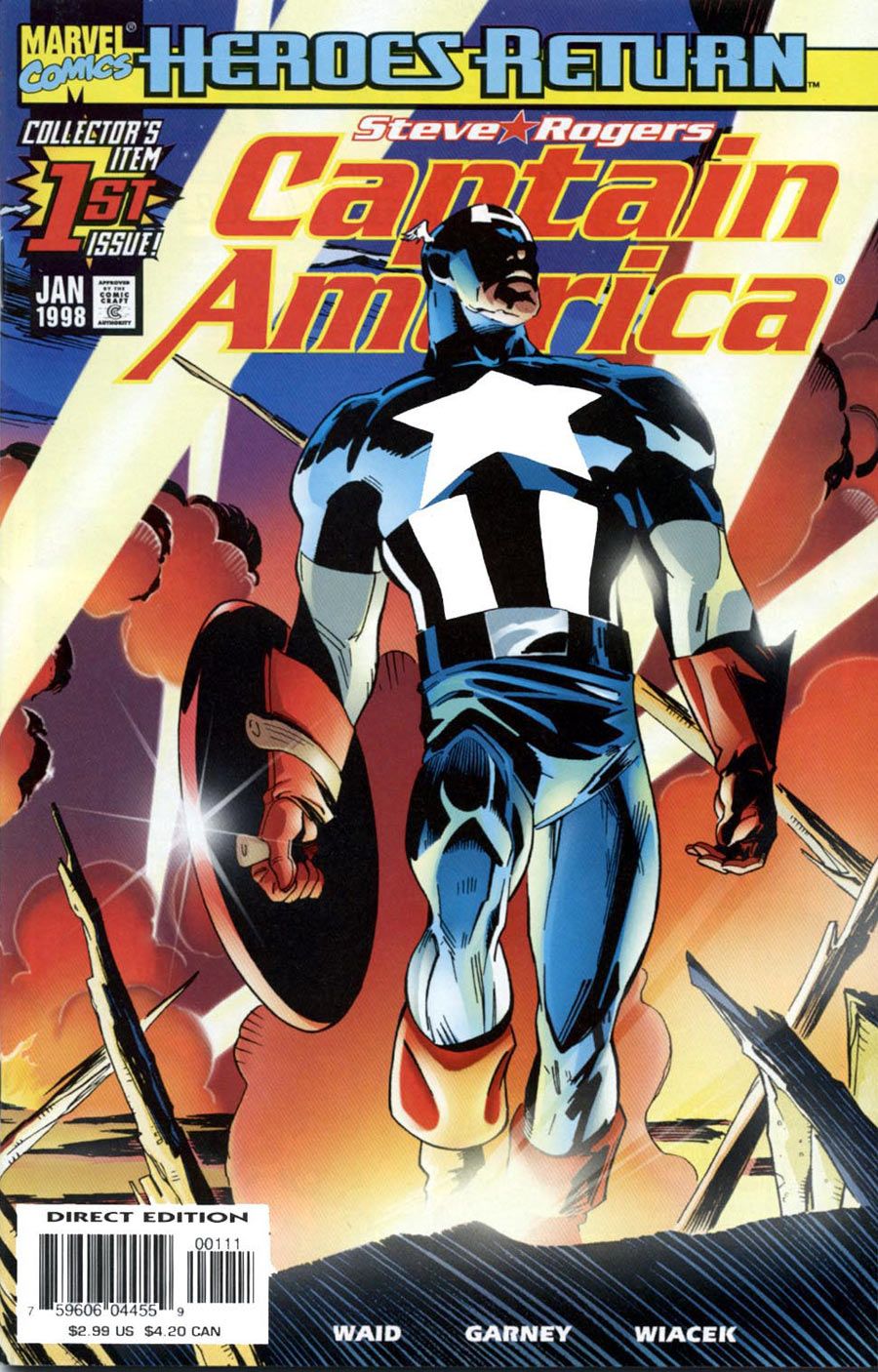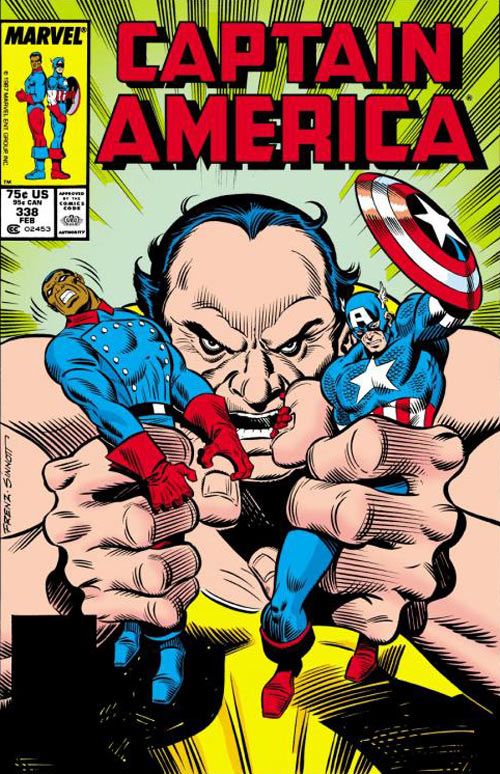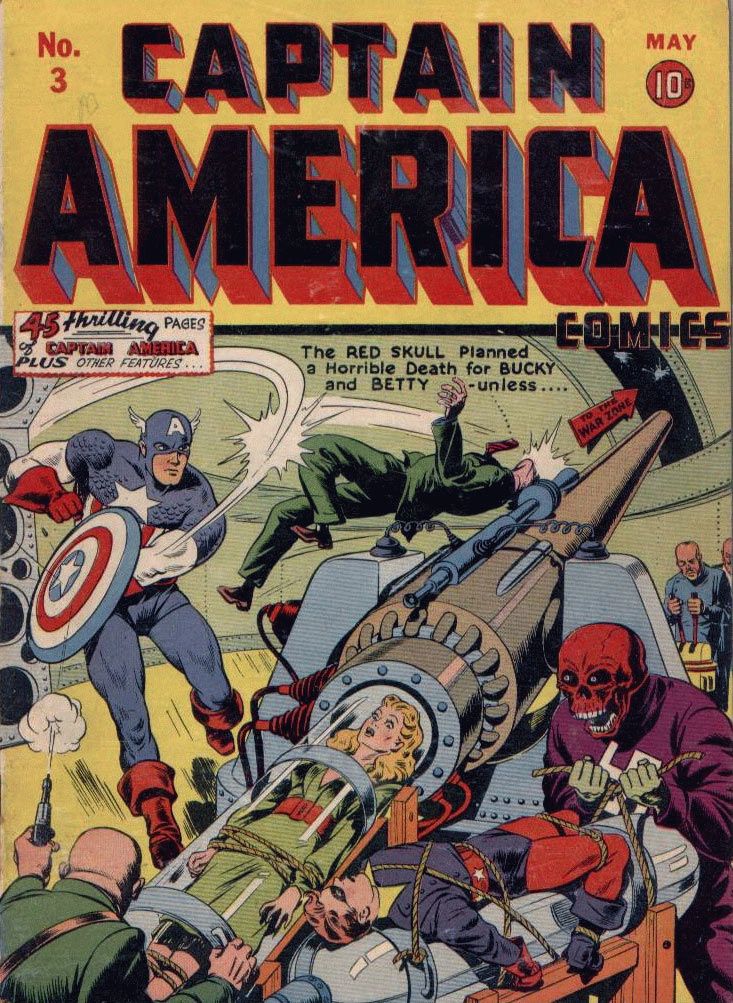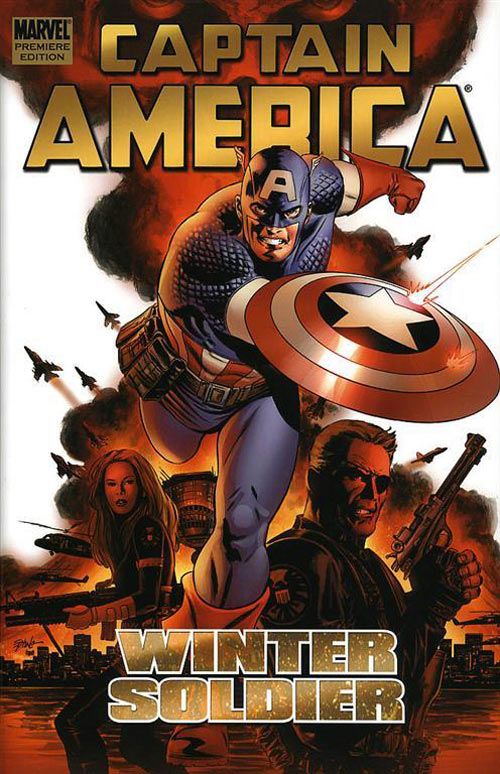Since the days of World War II, Captain America has been a heroic symbol for everything right and good about America. Along the way, Steve Rogers' star spangled alter ego has been guided by some of the best writers across every era of comics. Across his career, the Sentinel of Liberty has tangled with Nazis, aliens and terrorists, traveled to both the future and the past, and numerous triumphs and tragedies. No matter the mission, Cap's stories have always both riveting, resonant and quite often socially relevant.
A Captain America (& Red Skull) For Every Age: Casting an Icon for Each Decade
With Marvel Studios' "Captain America: The Winter Soldier" finally in theaters, CBR casts a light on the character's comic book history to determine the greatest scribes to ever guide the first Avenger. From the glory days of the Golden Age to the more complex storytelling of the Silver Age, from the socially aware stories of the '80s to his modern resurgence as a comic and film star, Cap has seen some of the best writers the industry guide his adventures throughout the decades. Here, CBR looks at the best of the best.
Dan Jurgens
"Captain America" (1998) #25-50
In the pages of his "Captain America," Dan Jurgens found the right mix of contemporary stories and classicism to maintain a fine balance for a character rooted in nostalgia. Jurgens created a loving tribute to the work of past writers while successfully forging the next chapter of Steve Rogers' legacy. In addition to his writing chops, Jurgens would later showcase his skills an artist on the series, pencilling "Captain America" stories featuring the Falcon, a new version of the Hate Monger, Namor and many more familiar faces. Refusing to rely entirely on the character's rich history, Jurgens also introduced fascinating new characters ripe for modern day revivals such as Protocide, the Super Soldier gone wrong. Like all great "Cap" writers, Jurgens presented his take on the Red Skull in a tense drama involving the hijacking of a S.H.I.E.L.D. Helicarrier. While his main strength was action, making nearly every panel burst with the energy fans have come to expect from a well executed "Cap" comic, Jurgens also injected a sense of character and big ideas that informed the larger story he was telling. Jurgens was the right man at the right time, a writer that transitioned Cap back to the character fans fell in love with before the '90s left everyone shaken and numb.
Joe Simon
"Captain America Comics" (1941) #1-10
It's hard to decipher the creators of many Golden Age comics as there was plenty of ghost work being done, and credits were spotty at best, but historians know that Joe Simon, along with his longtime partner Jack Kirby, created Steve Rogers and Captain America. In the 1940s, Simon and Kirby were a fount of creativity and responsible for more than one modern legend. Simon wrote the earliest adventures of Cap, conceiving Steve Rogers as the skinny kid that hated bullies so much that he risked his life in a daring experiment to protect America from them. With Kirby ever at his side, Simon created Bucky, the Red Skull, both of Cap's iconic shields, and in many respects ushered in the Marvel age of comics through every word and panel.
Cap was created months before Japan attacked Pearl Harbor, yet Simon's new hero was already on the frontlines; on the very first "Captain America" cover, Cap was rendered punching Hitler square in the jaw, a vision that ignited the patriotic imaginations of kids across America. Simon and Kirby's prophetic vision sold one million copies of "Captain America Comics" #1 for Marvel, then known as Timely. Whether in film or comics, the character of Captain America never strayed far from Simon's vision, and without him there would be no Steve Rogers.
Steve Englehart
"Captain America" (1968) #153-186
With a title switch to "Captain America and the Falcon," Steve Englehart's run started out with a strong focus on Cap's new partner, which tasked Englehart with not only maintaining the Captain America tradition but also tell the story of the new story hero, who just so happened to be the first African American super hero to headline his own title -- in fact, he was the first African American costumed hero in mainstream comics, period. Englehart had to flesh out the life of Sam Wilson while keeping Cap in the spotlight, and he did both with gusto. Wilson was Steve Rogers' entry point to a more contemporary, liberally-minded era, a partnership which resulted in some of the most gripping, socially conscious comics of the Bronze Age. The series seamlessly bounced between the inner city settings of the Falcon's world and modern America as experienced by Steve Rogers in a dual narrative that was a pleasure to return to, issue after issue.
Englehart also developed one of the more interesting retcons in Cap history, introducing the world to the Cap of the '50s, William Burnside, and his partner, Jack Monroe, Burnside's Bucky, who would go on to forge his own Marvel U identity as Nomad. Englehart introduced the first Viper and the initial incarnation of the Serpent Squad, tweaking and updating Cap's rogues gallery. Englehart had Cap fight werewolves, mummies, a resurrected Yellow Claw, and even had a crossover with the X-Men, before it was cool. Yet, Englehart's finest hour was when he dared to remove Captain America from his own book. During the Watergate scandal years, Englehart's Cap become disenfranchised with America. And when the head of the Secret Empire -- a shadowy Star Chamber-style organization looking to become puppet masters over Earth's governments -- was revealed as the President of the United States (a not so subtle allusion to the Nixon administration), Rogers to cast off the identity of Captain America for good. After a few issues of the Falcon fighting alone, Rogers returned as the first Nomad. This in what many consider Englehart's finest hour, crafting one of the greatest Cap stories ever without even having Cap in the book. Now that's some clever sleight of hand.
Jack Kirby
"Captain America" (1968) #193-214
When Jack Kirby returned to the hallow halls of Marvel in 1976, the King went in some unexpected directions. In addition to gifting Marvel some new properties including "Devil Dinosaur" and "The Eternals," Kirby returned to characters he created such as "Black Panther" and his original super hero, "Captain America." Never before had Cap's title (or really any mainstream super hero book for that matter) been so frenetic and packed with concepts and energy. Like most of his work from the Bronze Age, Kirby's "Captain America" was equal parts fevered insanity and a master class in experimental storytelling. Kirby took Cap in a whole new direction, filling the book with a veritable monsoon of sci-fi concepts that left fans' heads spinning. Some readers were confused by the nontraditional madness -- pure, unadulterated Kirby -- but with hindsight Kirby's solo issues of "Captain America" can be viewed as genius, a time when the series allowed almost anything to happen. "The King" introduced the concept of the Madbomb, a weapon that drove anyone in its vicinity insane; the Killderby, which featured a skateboarding Cap and Falcon in a game of death; the freakish Night People of Zero Street; the villainy of the Swine; and the Man Fish.
While subsequent writer have shied away from some of these concepts following Kirby's exit on the book, that doesn't mean Kirby's run as writer didn't have a major impact on Captain America's legacy. Nowhere is this more apparent than in Arnim Zola, a visually shocking villain who has tormented Steve Rogers for years to come, and even make an appearance in "Captain America: The First Avenger." Zola was a threat ripped from the days of World War II, a Josef Mengele-like menace and conceptually one of Cap's most horrific foes. The more fantastical elements introduced by Kirby are being explored in writer Rick Remender's current run on the title, proving that Captain America is a character strong enough to thrive in any genre, and with Kirby at the helm flying solo (he even was the editor on the book during his run) back in the day, things became gleefully insane very quickly.
Roger Stern (with John Byrne)
"Captain America" (1968) #230,247-255,600, "Captain America: Sentinel of Liberty" #6-7, "Captain America Corps" (2011) #1-5
It may have been all too brief, but Roger Stern's run on Captain America with sometimes writing partner and full-time artist John Byrne serves as one of the highlights of Captain America's publishing history. In his 9-issue run, Stern explored Cap's entire world -- both his World War II past and his modern day present -- and reminded fans why that character has endured so long. In the few issues, Cap faced the Machinesmith, Dragon Man, a revived in the present day Baron Blood, and even considered running for President of the United States in one of the most beloved Cap stories ever told. Stern's Cap was a three dimensional hero, a man of honor as courageous as he was vulnerable. Stern also presented arguably the greatest Batroc story ever written as Ze Leaper teams with Cap to take down the psychotic Mister Hyde. Stern crafted a perfect series for his partner John Byrne, an artist at the height of his creative prowess, to visually adapt. Everything great about Cap is on display in these handful of issues, and anyone who wants to experience Cap at the heights of creative energy should seek them out. Not only were they groundbreaking, they are damn fine comics by any definition.
J.M. DeMatteis
"Captain America" #261-270, 272, 275-290, 292-300, Annual #6
J.M. DeMatteis' unique brand of spiritualism combined with his masterful pacing and dialogue always make his work a treat to read, but when the writer took over "Captain America" in the early '80s, he crafted a more mature and realistic world for Cap. Some of his issues, most memorably his Deathlok story arc, were instant classics, as DeMatteis was not afraid to have Steve Rogers question that nature of modern day America and his place in the ever changing landscape of a complex modern nation. DeMatteis took the 1950s Bucky, Jack Monroe, and fleshed him out as Nomad, creating a character who would become a large part of Cap's world for years to come. DeMatteis was the first writer who took the more science fiction oriented creations of Jack Kirby, such as Arnim Zola, and seamlessly weave them into the tapestry of the Marvel Universe. The writer breathed new life into Baron Zemo, transorming him into a threat on par with the Red Skull. And speaking of Cap's crimson Nazi nemesis, DeMatteis' final issue contained what was intended as the final battle between Steve Rogers and the Skull, an intense battle between hated enemies that ended with the Skull's death. We'd be hard pressed to find a better single issue of "Captain America" as decades of conflict come to a head in a single, climactic battle. DeMatteis really had a hold on Cap's established foes but he was comfortable introducing new concepts like Vermin, a character who would play a huge role in Dematteis' later work on "Spider-Man," and Black Crow, a Native American character who, according to DeMatteis, was supposed to take over from Steve Rogers after Rogers' death. While Marvel never got on board with that plan and DeMatteis' run ultimately ended prematurely, it remains one of the most daring and experimental times in Cap's rich history.
Mark Waid
"Captain America" (1968) #444-464,600, "Captain America" (1998) #1-23, "Captain America: Sentinel of Liberty" (1998) #1-12, "Captain America: Man Out of Time" (2011) #1-5
Perhaps no one has quite captured the majesty of Captain America quite like Mark Waid. After the extreme, gun-laden, pouch-accessorized excess of the '90s, comics began to return to their roots, finding the cores of the characters again after years of gritty excess. Waid streamlined Cap, and in doing so, revitalized his character for years to come. Waid also oversaw the return of Sharon Carter, a character many see as Cap's true love, and once again made the Red Skull the most evil character in the Marvel Universe.
Sadly, comics were not ready Waid's work, and the '90s weren't far enough into the rearview as Waid was removed from the title for the Heroes Reborn event, replaced with '90s icon Rob Liefeld. Reaction from fans was mixed, at best, and once the ill-fated reboot ran its course, Waid returned to Captain America with not one but two new "Cap" titles, proving you can go home again as he crafted in both "Captain America" and Captain America: Sentinel of Liberty," comics that hold up to a contemporary reading. One of the more memorable concepts that Waid came up with were the evil KubeKult, a group of worshipers of the Cosmic Cube that set the stage for Cap tales for years to come. Exploring Cap in the modern era and the Golden Age, Waid's run even featured a battle with Hitler himself, and with each issue, he made Cap's world and character that much richer. One thing was made clear during Waid's time with the star-spangled icon: The writer knows Steve Rogers. He knows what motivates the Sentinel of Liberty, what inspires him and how to make readers remember why they fell in love with Cap in the first place.
Mark Gruenwald
"Captain America" (1968) #338-443, Annual #8, 10-12
For much of the '80s, Mark Gruenwald was one of the main torch bearers for the Marvel Universe, Captain America in particular. For over a hundred issues, Gruenwald brought his brand of storytelling to Cap's world, fleshing out the supporting cast and keeping Cap vital in the days between the Bronze and Modern Ages. Yes, there were some hiccups in the run (Cap Wolf, Armored Cap), but for the most part, fans were engrossed and entertained by the writer's tales. Gruenwald introduced fans to Crossbones, a villain that has become a major Marvel U bad guy, returned the Red Skull to his position as Cap's greatest and most dangerous enemy and created the Serpent Society, an amped-up Serpent Squad, with each member more eerie than the last. In "Streets of Poison," the Kingpin goes to war with the Red Skull with Cap in the middle while the "Bloodstone Hunt" was one of the better Heinrich Zemo stories ever written.
Gruenwald also told a classic tale of redemption when Diamondback, a former villainess with the Serpent Society, reformed and became Cap's girlfriend. Gruenwald took a trivial background character with silly abilities (she throws diamonds) and turned her into a fully realized, rich character who arguably, other than Sharon Carter, became the most popular of Cap's girlfriends.
Of course, Gruenwald's most memorable tale resulted in the introduction of John Walker, a hero known as Super Patriot, who eventually went on to replace Steve Rogers as Captain America. Rogers had again grown disenfranchised with the US government after it claimed to have legal control over the Captain America identity. Rather than operate as a loaded gun for them to aim, Rogers resigned, taking on the mantle of the black-clad Captain, while Walker became a violent replacement Captain America. After Walker's parents were gunned down in front of him in one of the most shocking moments in Gruenwald's run, things really heated up in the war between the Captains. Over the course of the storyline, Gruenwald added layers to Rogers by stripping him of his red, white and blue raiment, showing that it is the man, not the costume, which makes him a great hero. Perhaps one of the saddest aspects of the modern era is that Gruenwald, a man who lived and breathed the Marvel Universe, who was a caretaker to its heroes' legacies in the truest sense of the world, never got to see the Marvel Studios films or the mainstream acceptance gained by the characters that he loved so much. Rest in peace, Mark, and thank you.
Stan Lee
"Captain America Comics" (1941) #3-25, 46-47, 54, 59, 61-64, 66, 70-72 "Tales of Suspense" (1959) #60-99 "Captain America" (1968) # 100-141, 155, 216, 400, 600
A young Stan Lee began writing the adventures of Captain America with the third issue of Cap's Golden Age title. Lee cut his teeth on Cap, honing his skill for a time when Stan would be "The Man." In the '60s, with the Marvel Universe in full swing, Lee, along with Cap co-creator Jack Kirby, revived Captain America for the modern day, introducing the "man out of time" element to the character. This wrinkle allowed a character that could have been anachronistic to fit right into the contemporary Marvel Universe. Together, Lee and Kirby built Cap's world, creating so many elements that would define Cap for generations to come, from the newly revived Red Skull, to the death of Bucky, to the espionage laden world of S.H.I.E.L.D., to Baron Zemo, the Cosmic Cube and everything in between. But most importantly, Lee redefined Rogers as a man. The newly resurrected Steve Rogers was a tragic hero, one who had a foot in the past and the future, a stranger in a new world he didn't understand but had to save. There hasn't been a Cap story since that didn't carry an element or idea that was not birthed in this run. Not only did Lee do his thing in the pages of "Tales of Suspense," and later "Captain America," he also did it in the pages of "The Avengers," where Cap became leader of the team, an inspirational figure that put together a new team with Hawkeye, Quicksilver and Scarlet Witch, a group that seemed strange at first but soon grew into a fighting unit molded by their leader. Under the guidance of Stan and his artistic partners, no matter how lost Steve Rogers became, he still fought on as an Avenger, or as a solo defender of liberty.
Ed Brubaker
"Captain America" (2005) #1-50, "Captain America" (1968) #600-619, "Captain America" (2011) #1-19, "Captain America & Bucky (2011) #620-628, "Captain America Reborn" (2010) "Captain America Reborn: Who Will Wield the Shield" (2010) #1
What can really be said about Ed Brubaker's run on "Captain America" that hasn't been said before? Brubaker told the Cap story no writer before him dared to tell, defying convention and resurrecting one of the few comic book characters that absolutely had to stay dead. But in bringin Bucky back from the grave, Brubaker propelled Cap into almost a decade's worth of stories that have redefined the character while providing the story fuel for the latest "Captain America" film. Through some of the most effective flashback stories ever seen in a comic, Brubaker shook readers' expectations on who exactly Bucky Barnes was, and in doing so, turned the character from a one note relic to a multi-layered antagonist, and eventually into Marvel's newest hero. Brubaker worked the same magic with Nick Fury, Sharon Carter, the Falcon, the Red Skull, Crossbones and so many more.
And after telling the impossible "Cap" story, what did Brubaker do for an encore? The unthinkable: he had the gall to (seemingly) kill Captain America and replace him with Bucky Barnes. After generations of the status quo being that Bucky was dead while Cap eternally mourned him, all of a sudden, the script was flipped. Bucky was alive, Steve Rogers was dead and Bucky was the man to wield the shield. Eventually, Brubaker brought Rogers back, and he continued to tell some amazing Cap stories with Sin, the Viper, and many more of Captain America's rogues, leaving the world of Steve Rogers much richer when he finally exited the title, almost ten years after he began the most daring Cap story in history.


